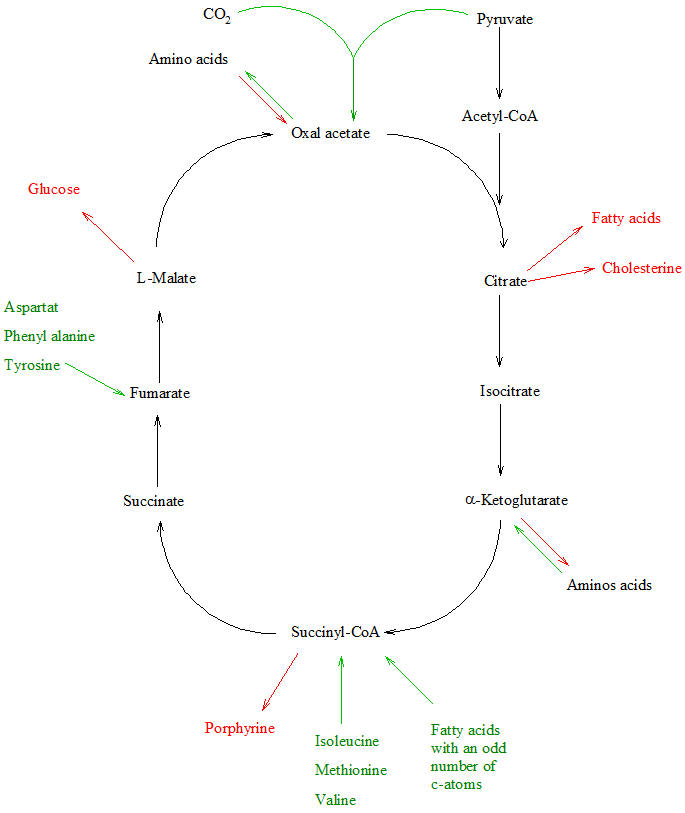Krebs cycle reactions
From Proteopedia
Reactions related with the Krebs cycle
In general, a metabolic pathway can be an anabolic (constructive) or catabolic (degrading) pathway. So far, the catabolic function of the Krebs cycle was discussed, in which the nutrients are introduced in the form of acetyl -CoA into the cycle and are degraded into CO2. But at the same time, the compunds within the Krebs cycle serve as important precursors for different biosynthetic pathways (anabolic pathways) . Thus, the Krebs cycle is amphibol, which means that it is both catabolic and anabolic. In the following, both functions of the cycle are considered in more detail. First, we focus on the reactions of the intermediated that are used for biosynthesis (anabolic pathways; red arrows in the Figure). Afterwards, we will take a look at the, the anaplerotic reactions (green arrows in the Figure), who deliver intermediates to the Krebs cycle to keep him working.
- Major metabolic pathways converging on the citric acid cycle
- Citric acid cycle intermediates serve as substrates for biosynthetic processes

